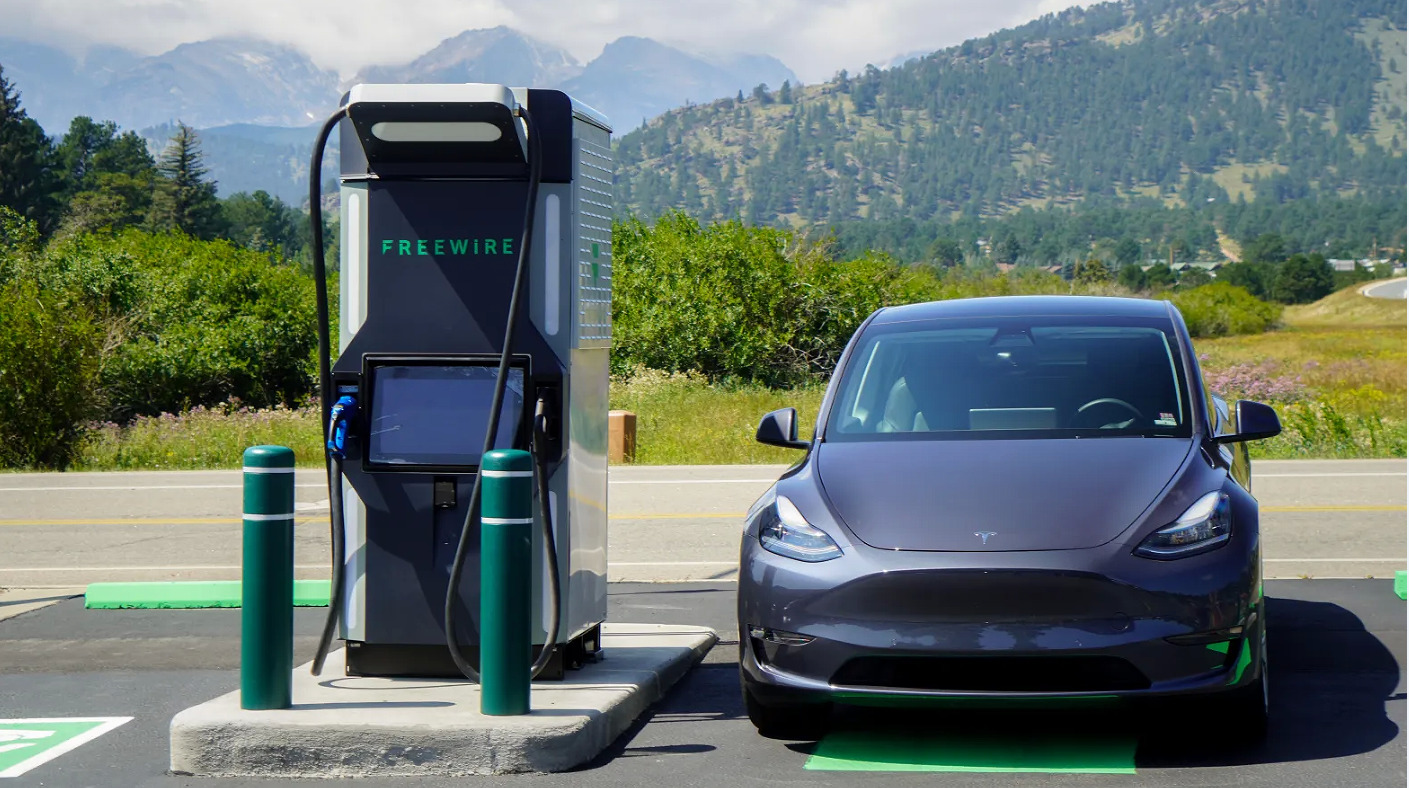If you’ve ever wondered why it’s called “DC fast charging,” the answer is simple. “DC” refers to “direct current,” the type of power that batteries use. Level 2 charging stations use “AC,” or “alternating current,” which you’ll find in typical household outlets. EVs have onboard chargers inside the car that convert AC power to DC for the battery. DC fast chargers convert AC power to DC within the charging station and deliver DC power directly to the battery, which is why they charge faster.
Our ChargePoint Express and Express Plus stations provide DC fast charging. Search our charging map to find a fast charging spot near you.
DC Fast Charging Explained
AC charging is the simplest kind of charging to find – outlets are everywhere and almost all EV chargers you encounter at homes, shopping plazas, and workplaces are Level2 Chargers. An AC charger provides power to the on-board charger of the vehicle, converting that AC power to DC in order to enter the battery. The acceptance rate of the on-board charger varies by brand but is limited for reasons of cost, space and weight. This means that depending on your vehicle it can take anywhere from four or five hours to over twelve hours to fully charge at Level 2.
DC Fast Charging bypasses all of the limitations of the on-board charger and required conversion, instead providing DC power directly to the battery, charging speed has the potential to be greatly increased. Charging times are dependent on the battery size and the output of the dispenser, and other factors, but many vehicles are capable of getting an 80% charge in about or under an hour using most currently available DC fast chargers.
DC fast charging is essential for high mileage/long distance driving and large fleets. The quick turnaround enables drivers to recharge during their day or on a small break as opposed to being plugged in overnight, or for many hours, for a full charge.
Older vehicles had limitations that only allowed them to charge at 50kW on DC units (if they were able to at all) but newer vehicles are now coming out that can accept up to 270kW. Because battery size has increased significantly since the first EVs hit the market, DC chargers have been getting progressively higher outputs to match – with some now being capable of up to 350kW.
Currently, in North America there are three types of DC fast charging: CHAdeMO, Combined Charging System (CCS) and Tesla Supercharger.
All major DC charger manufacturers offer multi-standard units that offer the ability to charge via CCS or CHAdeMO from the same unit. The Tesla Supercharger can only service Tesla vehicles, however Tesla vehicles are capable of using other chargers, specifically CHAdeMO for DC fast charging, via an adapter.
4.DC charging station
A DC charging station is technologically much more complex and many times more expensive than an AC charging station and moreover it requires a powerful source. In addition, a DC charging station must be able to communicate with the car instead of the on-board charger in order to be able to adjust the output power parameters according to the condition and capability of the battery.
Mainly due to the price and technological complexity, we can count significantly fewer DC stations than AC stations. Currently there are hundreds of them and they are located on the main arteries.
The standard power of a DC charging station is 50kW, i.e. more than twice that of an AC station. Ultra-fast charging stations have power of up to 150 kW, and Tesla has developed super-ultra-mega-fast charging stations with an output of 250 kW.
Tesla charging stations. Author: Open Grid Scheduler (Licence CC0 1.0)
However, slow charging using AC stations is gentler for batteries and it helps their longevity, so the ideal strategy is to charge via the AC station and use DC stations only on long journeys.
Summary
Due to the fact that we have two types of current (AC and DC), there are also two strategies when charging an electric car.
It is possible to use an AC charging station where the charger takes care of the conversion. This option is slower, but cheaper and gentler. AC chargers have an output of up to 22 kW and the time required for a full charge then depends only on the output of the on-board charger.
It is also possible to use DC stations, where charging is more expensive, but it will take place within a few minutes. Usually, their output is 50 kW, but it is expected to increase in the future. The power of rapid chargers is 150 kW. Both of them are located around the main routes and should be used for longer journeys only.
To make the situation a little more complicated, there are different types of charging connectors, an overview of which we present. However, the situation is evolving and international standards and adapters are emerging, so in the future, it will not be a much bigger problem than different types of sockets in the world.
Post time: Nov-20-2023

 Portable EV Charger
Portable EV Charger Home EV Wallbox
Home EV Wallbox DC Charger Station
DC Charger Station EV Charging Module
EV Charging Module NACS&CCS1&CCS2
NACS&CCS1&CCS2 EV Accessories
EV Accessories

